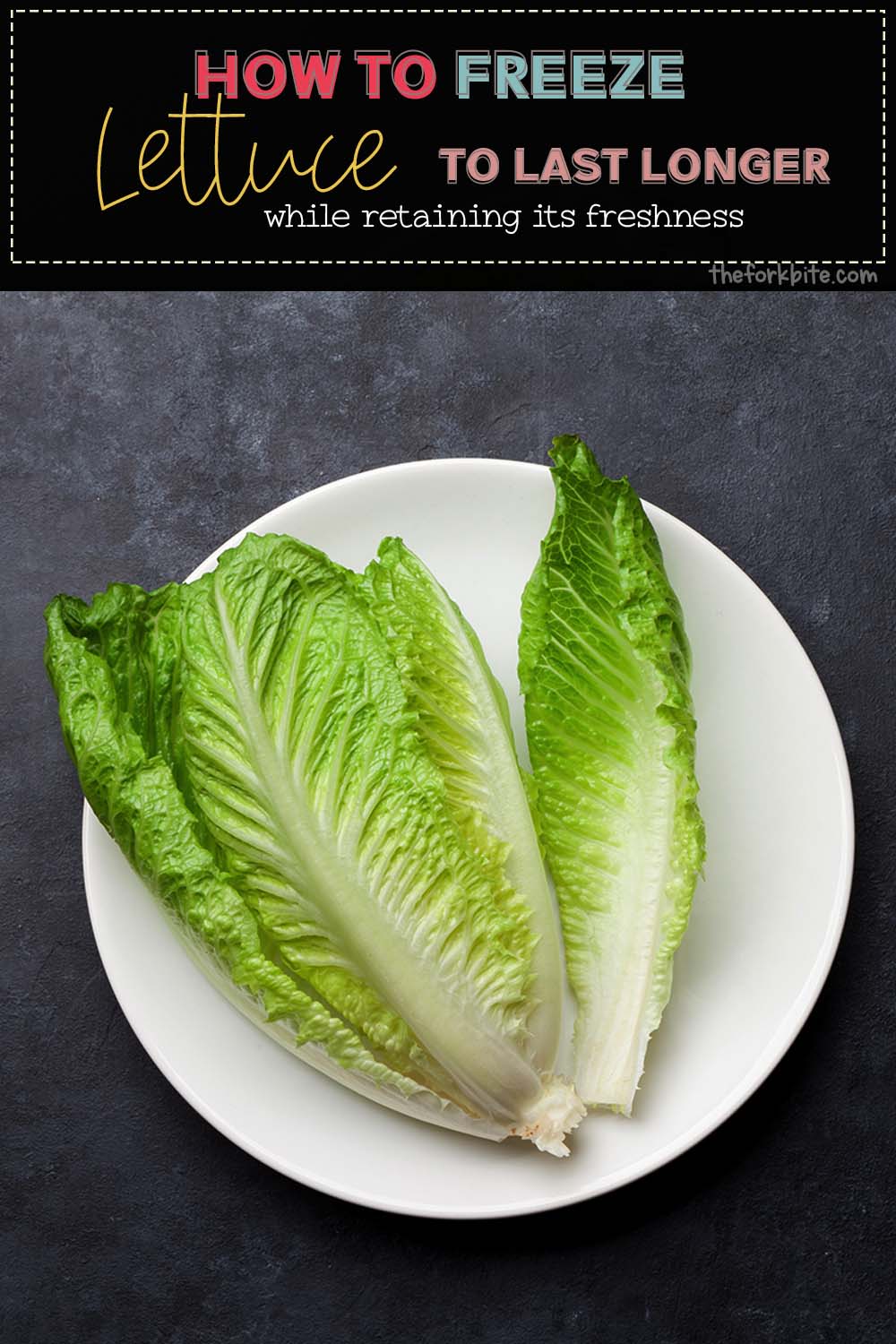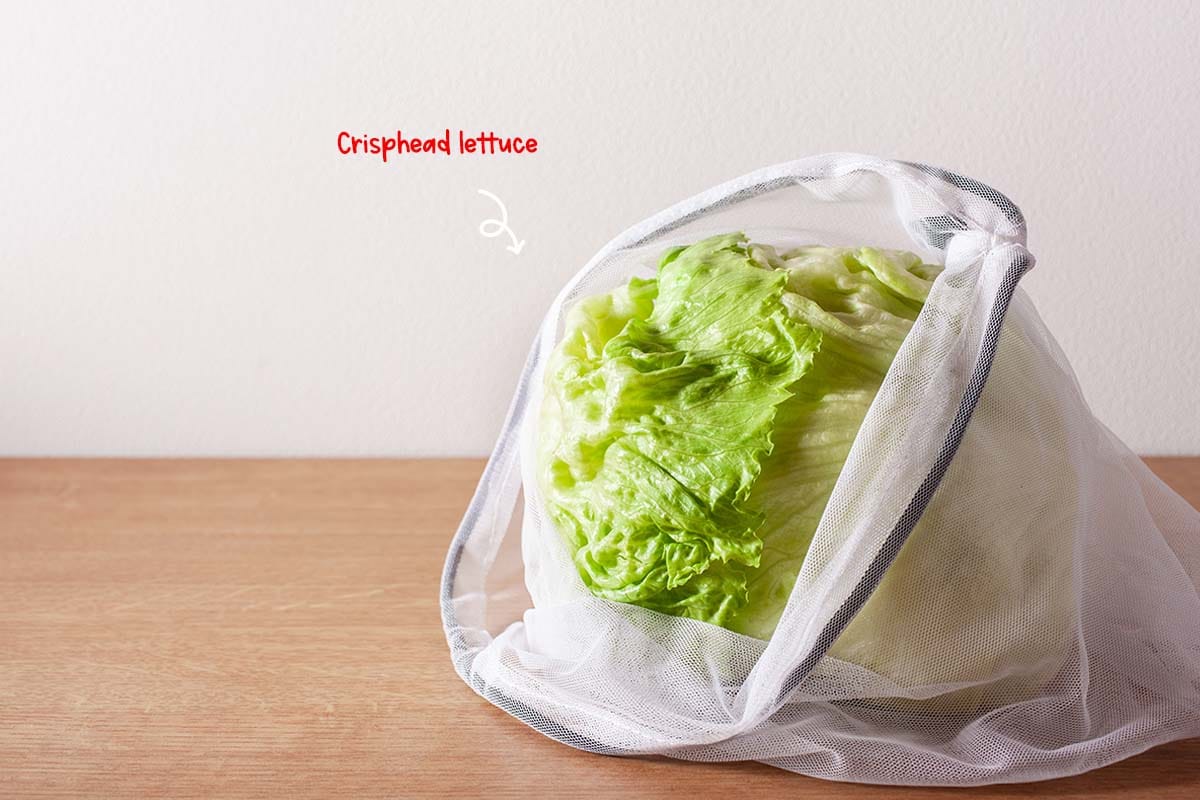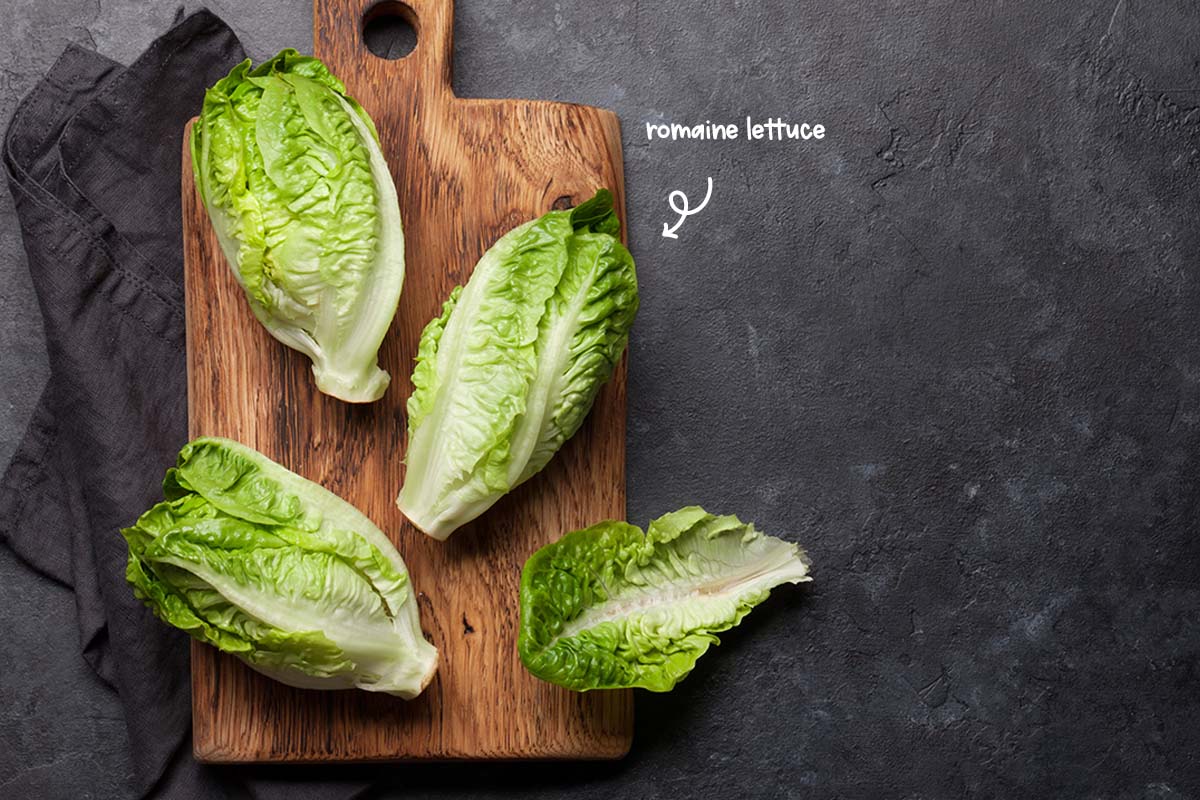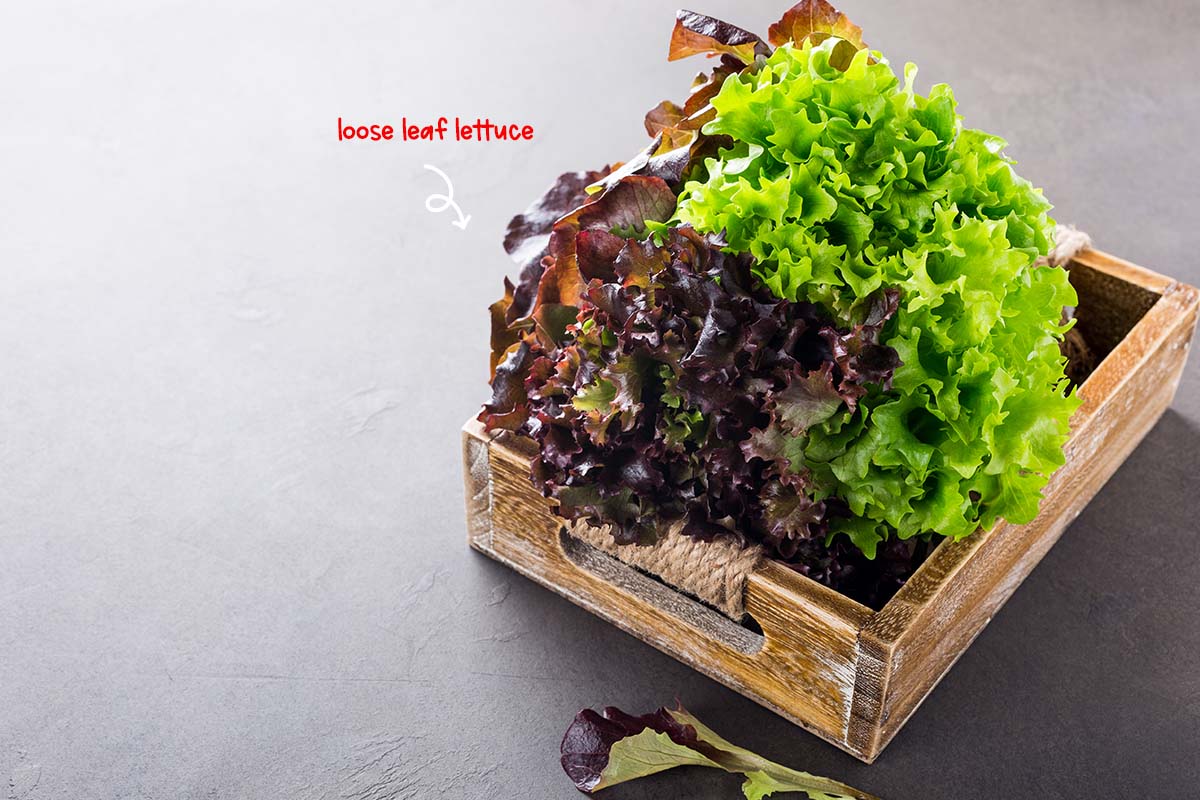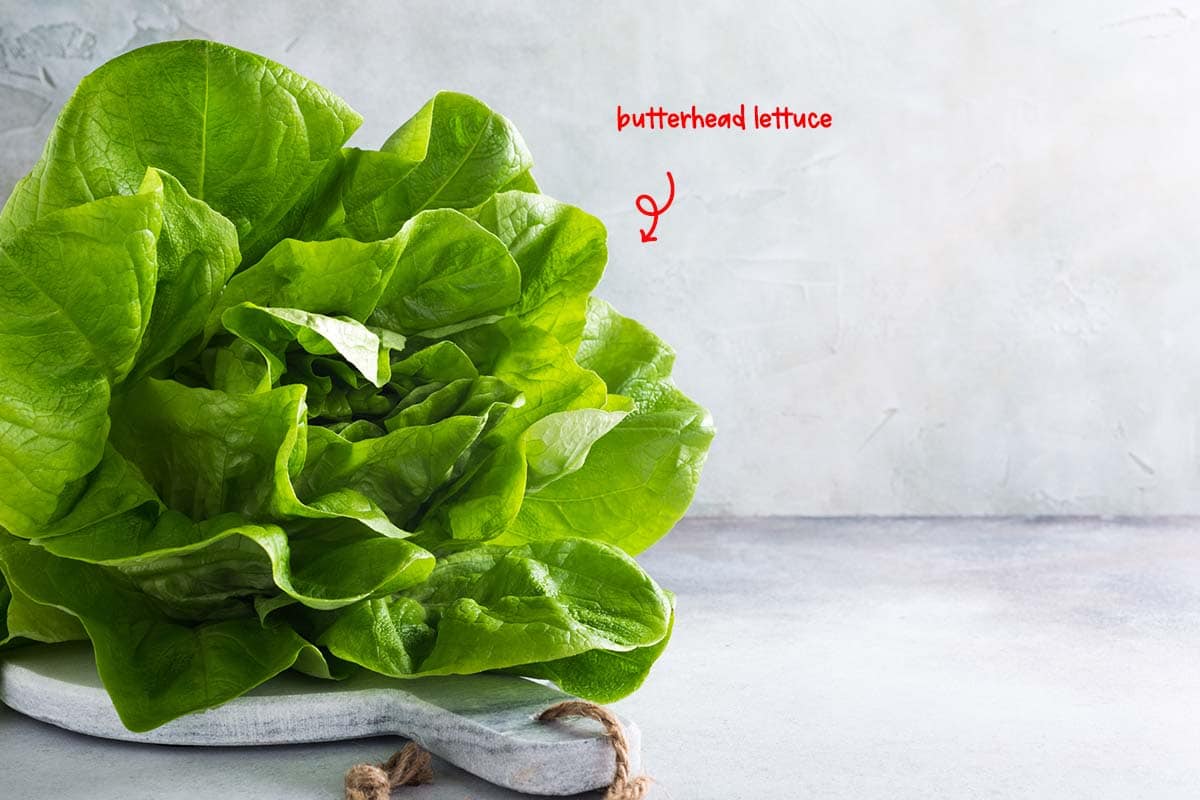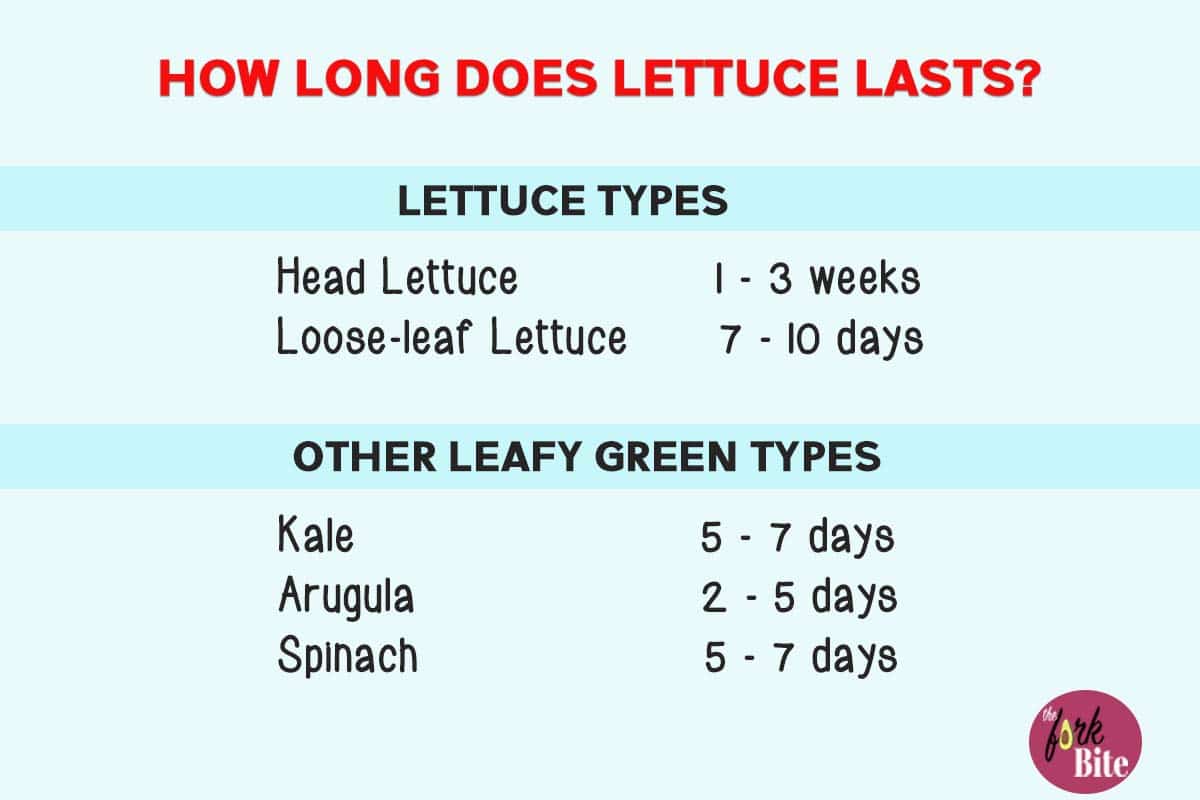You may wonder if you can freeze lettuce. The short answer is NO, only if you wish to make some salad and end up with a thawed out leaves. But yes, you can freeze lettuce if you plan to use it for cooking soup or casseroles and flavoring uses.
You know why?
The reason is that the freezing process itself leads to ice crystals to form in plant cells, which could rupture the cell walls. Thus, making its structure to weaken and the texture becomes softer. Lettuce holds high water content that, if frozen, results in a more slimy mess that can spoil the appetite. Unlike peas or corn, which are high in starch and contain little water, the cell wall damage is less visible when frozen.
Lettuce is one of the most underrated veggies on the planet, but it also one of the most useful. Salad is loved by the world over, but where would it be without lettuce? Nowhere!
The problem is that it's very fragile stuff, and when most people empty their fridges before the big shop, lettuce is nearly always one of the first things that go. But did you know you can freeze the stuff? No? Then read on, and all will be revealed.
Wave goodbye to soggy lettuce forever. With the tips and tricks I will share with you today, you will never have to eat lettuce that isn't crisp and crunchy ever again.
Keeping lettuce, so it stays beautifully fresh, is not an easy thing to do. It is a delicate vegetable. But I will tell you how to go about keeping it as new and vibrant as possible when you eat it long after you bought, it by freezing it.
Clammy, sodden leaves - sorry, shriveled lettuce. Not exactly an enticing thought. It is depressing to have to waste food, but lettuce loses its best qualities too quickly. After only a few days in the fridge, it is only good for throwing away.
But, when you have read what I am about to tell you, you will be able to conserve your lettuce so that is is crisp and fresh for a week or even longer.
Types of lettuce
Crisphead
Usually called "iceberg," this type of lettuce is probably the most familiar here in the U.S. It is generally wrapped in shrink film and appears on most grocery stores' shelves.
When seeking to buy one, look for lettuce with a round, consensed looking pale green head. It has a mild taste and is often used in salads and sandwiches. It is also often to be found in tacos and many other foods.
For some reason, it has something of a poor reputation. Goodness knows why. Its satisfying, crunchy, texture is the perfect base for any salad or sandwich.
Where to use it:
It is excellent in any salad with a heavy dressing, it is the go-to for any recipe calling for shredded lettuce, and it adds a contrasting texture to sandwiches and salads layered and chilled overnight.
Romaine
Often referred to as Cos lettuce, romaine is the type of lettuce you will find in a classic Caesar salad. It has an elongated, upright head of crunchy, light green leaves with a crispy center - especially the lighter leaves you find near the heart. It has a distinct taste.
Most grocery stores stock romaine lettuce. It is robust and holds its form well when grilled. It goes well with crisp apples, pears, and a sprinkling of nuts.
Where to use it:
Use it in any salads that have rich, creamy dressings, or spicy, aromatic vinaigrettes. This lettuce also can be grilled.
Loose-leaf lettuce
Loose-leaf lettuce has big, open, crumpled looking leaves. It grows around a middle stalk and not a compact one as with crisphead and romaine. The leaves are tender and have a mild, nutty sort of flavor.
Typically found in both green and red varieties, this lettuce is loose-leafed and perishes much more quickly than those with more compact heads. To prevent it from wilting when you serve it, drizzle it with a little dressing.
You can serve whole leaves with younger lettuces as they are relatively small, but with bigger, older lettuces with larger leaves, I recommend tearing or shredding them into more bite-sized pieces.
Where to use it:
Loose-leaf lettuce is fine served with light to medium type dressings, can be mixed with baby lettuces, or used in wilted lettuce salads. It can also be put into sandwiches and wraps.
Butterhead lettuce
The head of butterhead lettuce is formed from loose leaves that are soft and smooth, and that comes with a red tinge or a uniform, pale green, which turns lighter closer to the center. You have to take a little care with this type of lettuce as its leaves are relatively tender and easily bruised.
The most popular types are Boston and bibb. They have a sweeter taste and tend to be a little more expensive.
Where to use it:
This lettuce is great for making lettuce cups and wraps for things like Thai chicken lettuce wraps. It also works well in sandwiches and takes light, subtle salad dressings.
Can you freeze lettuce?
Yes, you can actually freeze lettuce, to keep it for even longer if you need to. But there are two things that influence their freeze-ability: the origin and the lettuce type.
The recommendation when it comes to freezing lettuce is to be selective. The best lettuces to freeze are those being purchased from the local farmer's market or those you grow in the backyard. Homegrown or community-raised lettuces haven't undergone shipping and storage; therefore, they are likely to hold up better during the freezing process.
- Choose thicker-leafed lettuces like romaine or butterhead, as they can handle the freezing process better than the "Iceberg lettuce". Bear in mind that it will lose some of its crispness and taste when you do freeze it.
I, therefore, suggest using frozen lettuce for things like smoothies, soups, and stews. Don't use it for things that need its crispiness, like salads. It's the same with other leafy veggies like kale and spinach, which you can also freeze.
Lettuce can be frozen in one of two ways.
- The first way is freezing whole lettuce leaves. To do this, first, wash the leaves, and pat dry with kitchen paper.
- Next, put them into an airtight freezer bag. It is possible to freeze pureed lettuce as well.
- Having made it into a puree, you can then pour it into ice cube trays and freeze.
- It is perfect for things like soups and smoothies. Frozen lettuce will keep for as long as six months.
How to wash
Lettuce needs to be washed carefully and thoroughly. Its leaves can be hiding things like bacteria, bugs, soil, and pesticides. So, wash it properly.
- To ensure that you wash your lettuce in the recommended manner, the first thing you should do is to remove it from its packaging and pull off any leaves that are damp, clammy or slimy, wilted, or otherwise damaged.
- With lettuces that have more condensed heads, pull off any damaged or poor quality other leaves. It cuts down on the amount of remaining moisture and helps extend the rest of the lettuce's life.
- Lightly rinse the remaining lettuce with cold water and dab dry with kitchen paper. Another way of drying is to use a salad spinner.
Should you wash already pre-washed lettuce?
The jury is split on this one, so to err on the safe side, wash it regardless. Pre-washing is no guarantee it doesn't have any germs, and even if it does, it might have picked up some extra anyway - so play it safe.
Best ways to store
To stay nice and crisp, lettuce requires air, and moisture, but in moderation. Too much of either will result in it wilting. You have the option of storing it either whole or as individual leaves. It depends on how long you will be storing it.
- You can store crisphead lettuce in the crisper drawer of your refrigerator without washing it. Just make sure to wash it before you serve it. The looser varieties of lettuce need to be cleaned prior to storing.
- Once washed, put the leaves on kitchen paper and roll them up. Put the roll into a ziplock bag and store it in the fridge. The lettuce will be good for two to three weeks so long as it is completely dry when you bag it. The kitchen paper's presence will help absorb any moisture that forms on the leaves in cold storage.
- Check the paper from time to time, and if it is too damp, replace it.
If you are refrigerating a whole head of lettuce, wrap it in damp kitchen paper. Then place it into a plastic bag and place it in the fridge.
For storing individual leaf:
- When storing lettuce leaves in individual leaf form, wash, spin dry, and put them into a lettuce keeper, then into the fridge.
- A container (such as a lettuce keeper) is useful because it helps prevent the leaves from being bruised and becoming susceptible to a build-up of bacteria.
- You can use a plastic bag, but you should leave one corner of the bag open to allow airflow if you do.
- Alternatively, you can cut the stems from the leaves, wrap in wet kitchen paper, and put it into the fridge's crisper drawer.
- Put a few sheets of kitchen paper into the drawer to soak up any excess moisture. Check from time to time to see if the paper gets too damp, and if it does, replace it.
Even when you do everything right, the lettuce may still wilt a little. If this happens, you can re-crisp it by soaking it in ice-water for a couple of minutes. Spin dry before serving.
Extra tip:
When storing lettuce, make sure you keep it away from any products like apples, grapes, and plums. They produce ethylene, which will make the leaves wilt. As lettuce contains such a high level of water, you have to be careful about freezing it, but more about that in a moment.
How long does it last?
The length of time you can store lettuce varies according to the type of lettuce and how you store it.
Loose-leaf lettuce can be stored for seven to ten days if appropriately prepared. Denser head lettuce can be stored for considerably longer.
A whole head of lettuce can last anywhere between one and three weeks in a fridge if it is not washed, and it is left intact. When compared to other leafy veggies, lettuce is the shelf-life champ.
If you lose track of how long you've been refrigerating your lettuce, all you need to do is check it. If it looks or smells bad, or it feels slimy, throw it away.
How to freeze lettuce to make it last longer
Lettuce isn't the pick of veggies for freezing, especially if you want to use it in salads. However, if you do it right, it can turn out pretty well.
Prolonging the life of stored lettuce means paying careful attention to the way you prepare it. If you don't do it properly, you will be wasting your time.
#Step 1
- The first thing to do is to cut the stalk off. When it comes to separating the leaves, use your hands rather than a knife.
- A blade can result in the leaves turning brown very quickly. The iceberg and romaine lettuce varieties have firmer centers. They tend to last longer when the core is removed.
- Lettuces that have thinner, more delicate leaves fare better when the core is left on.
#Step 2
- The second step is to remove any brown or damaged leaves. If you leave them on, the whole lettuce will be less tasty, and it will begin decomposing that much quicker.
- Now wash the leaves thoroughly using cool, clean, running water. Then, use a soft cloth or some kitchen paper sheets to pat the leaves dry and set aside for a few minutes. If you own a salad spinner, put it to use.
- It is important to get rid of all the moisture, as otherwise, it will begin to degrade the leaves. It could even destroy them. Once you are happy that they are as dry as you can get them, put them into watertight, freezer bags.
- Extract as much air as you can from the bag before you seal it. Do not overpack the bags. If you do, you run the risk of ruining the leaves. Place the bag in your freezer.
- When you freeze lettuce or any other green, leafy, veggie, store it in the freezer's coldest part.
Make sure that you do not squeeze and bruise the leaves by cramming the bag too tightly with other frozen foods. Remember, also, to keep your lettuce separate from other fruit and veg that emits ethylene gas, as this can result in spoilage.
Step #3
- Finally, keep an eye open for any water running down the sides of the container.
- If you spot this happening, lower the humidity setting.
- If you see ice crystals forming on the leaves, increase the temperature a little.
Watch the video
How to keep romaine lettuce fresh
Romaine lettuce has a higher than usual water content, so you need to take care on how you keep it fresh.
If you follow these next few steps, it should ensure prolonging the lettuce's freshness.
- Half fill your kitchen sink with clean water that is at room temperature.
- Using a clean and sharp blade, remove the lettuce's core.
- Separate the leaves but keep them in water,
- Wash the leaves thoroughly to remove any traces of dirt or other residues.
- Remove from the water and pat the leaves dry with kitchen paper or a clean towel.
- Place dry kitchen paper in the crisper drawer to soak up any of the lettuce's excess moisture.
- Place the leaves layer upon layer on the kitchen paper and store.
How to keep iceberg lettuce fresh
Iceberg lettuce is superb in salads, so it needs to be kept fresh and crispy.
- Follow the same procedure as with romaine lettuce, but before you put iceberg into the crisper drawer, you should place it in a plastic bag.
- Make sure that you change the kitchen paper regularly to stop the lettuce from becoming over-moist. It needs to retain its crisp texture.
Lettuces are healthy veggies and are quite easy to grow. It means you could add fresh from the garden, homegrown lettuce to your diet if you decide to grow it yourself. If you've got room in your garden, and now, knowing how to freeze it if you end up with more than you can eat at once, it makes perfect sense.
Freezing lettuce for smoothies
As we mentioned earlier, you can freeze lettuce for smoothies.
- It is best to use thicker type lettuce leaves as they freeze better than their thinner counterparts. If you like to put lettuce in your smoothies, having some in the freezer means you've got it whenever you need it.
It takes the pressure off bulk buying and praying your fridge can cope with keeping it fresh.
Food experts in-the-know recommend a couple of ways to freeze lettuce for use in smoothies.
Bag it. Bagging green, leafy veggies is the simplest way to freeze them.
- Take the lettuce out of the wrapping you bought it in and put it into a big freezer bag.
- If you are feezing a whole lettuce head, cut it into smaller pieces.
- You could, if you wanted to, freeze it in ready-made portion sizes by using pint-size freezer bags.
Cube it. We made a brief mention of this earlier - storing pureed lettuce leaves.
- It requires a food processor or blender.
- Blend the leaves into a puree, adding a little water to make the puree a little smoother, and it will be perfect to use in any future smoothie making.
Tray it. Once the puree is to your satisfaction, pour it into ice cube trays.
- Use the locking type to avoid any spills. You won't lose any moisture, and your trays will be stackable.
- Once frozen, you have a couple of options for what to do next.
- You can leave the cubes in the trays, or if you need them for something else, you can take the frozen cubes out and put them into a large freezer bag.
Puree cubing is very convenient. The next time you make a smoothie, all you have to do is grab as many cubes as you want and throw them straight into the blender.
Can you freeze bagged lettuce?
There s no reason that you cannot freeze bagged lettuce in the bag you have just bought in from the grocery store. You can add it to any casseroles, quiches, soups, stews, and stir-frys you make in the future.
- The easiest way of storing frozen lettuces is to cut them into small chunks before bagging and freezing. It is best if you cut them uniformly into thinner pieces.
How to defrost lettuce
Defrosting frozen lettuce couldn't be easier.
- You can do what most people do and take it out of the freezer, remove it from its packaging, lay the leaves onto kitchen paper and leave it at room temperature to defrost.
- Alternatively, you can lay the leaves out onto a dishtowel. This way, as the leaves thaw, the cloth will absorb any excess moisture. It will take a little time, so be patient.
- To stop moisture rings appearing on your work surface, put a cookie sheet beneath the kitchen towels or cloth on which the leaves are defrosting.

